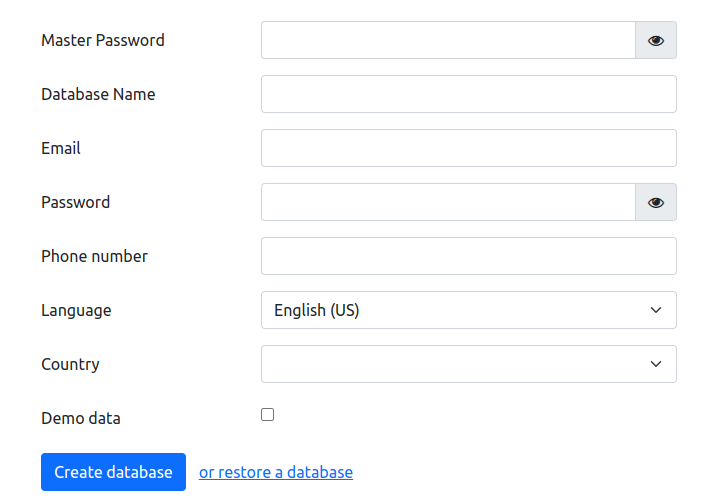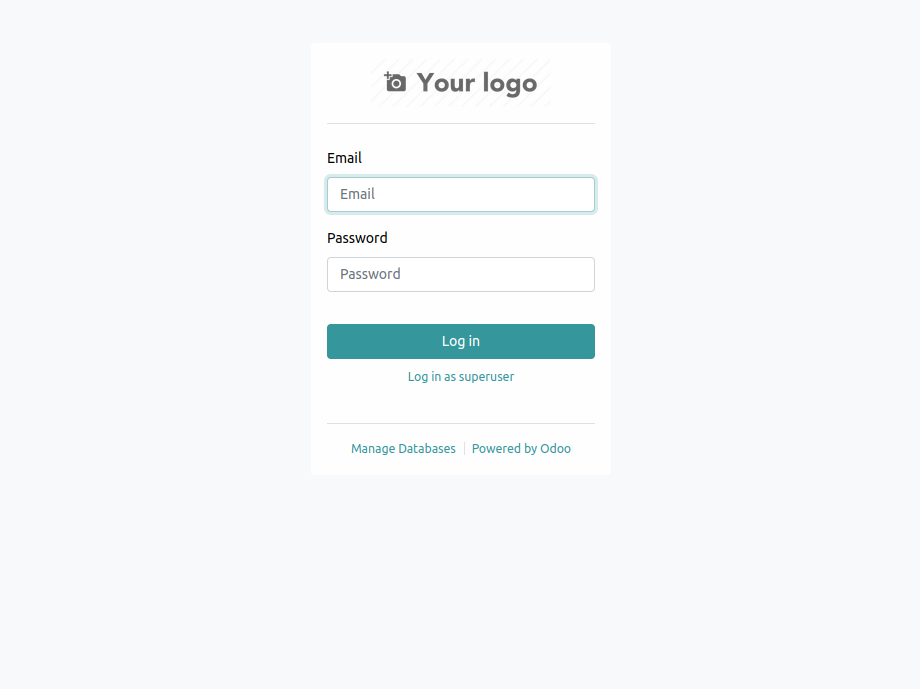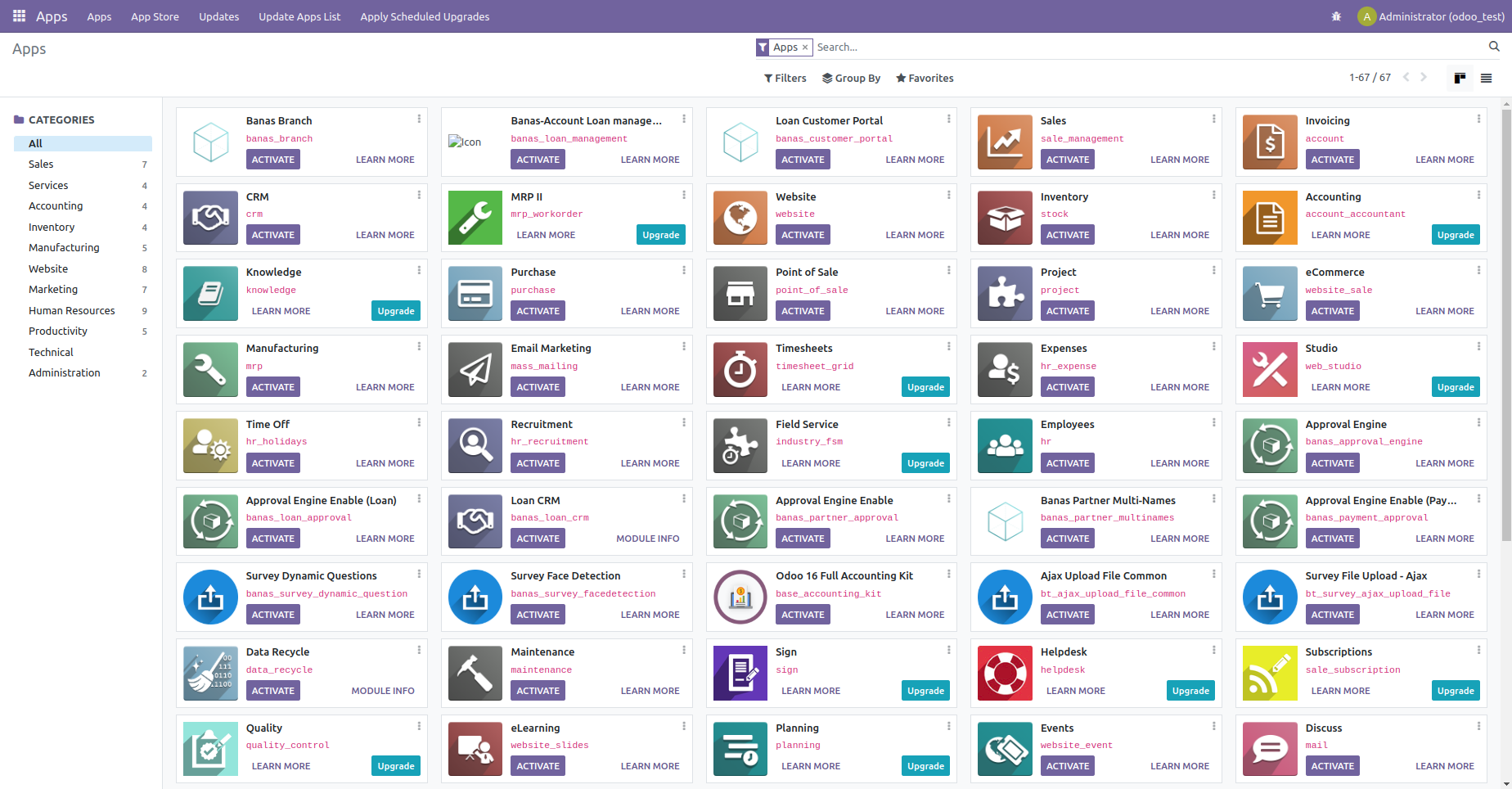Odoo 16 Installation Guide with External Custom Module for Ubuntu 22.04
This guide explains how to install Odoo 16 on Ubuntu and configure a custom module (Loan16).
Step 1: Update System
Ensure your system is up-to-date to avoid compatibility issues.
sudo apt update && sudo apt upgrade -yStep 2: Install Required Packages and Dependencies.
Installs a collection of development tools, Python libraries, and system dependencies needed to properly build, install, and run Odoo 16 on Ubuntu.
sudo apt install build-essential wget git python3-pip python3-dev python3-venv python3-wheel \
libfreetype6-dev libxml2-dev libzip-dev libsasl2-dev python3-setuptools libjpeg-dev zlib1g-dev \
libpq-dev libxslt1-dev libldap2-dev libtiff5-dev libopenjp2-7-dev
Step 3: Install PostgreSQL
Install the PostgreSQL database and create a dedicated Odoo user.
sudo apt install -y postgresqlStep 4: Create Odoo System User
Create a separate system user to isolate the Odoo instance.
sudo adduser --system --home=/opt/odoo16 --group odoo16Step 5: Switch to the PostgreSQL user and create the database user for Odoo
This command creates a PostgreSQL user odoo16 with the ability to create databases, but without superuser or role-creating privileges, and prompts to set a password.
sudo -u postgres createuser --createdb --username postgres --pwprompt odoo16Grant SUPERUSER privileges to the PostgreSQL Odoo user
sudo su postgres
psql
ALTER USER odoo16 WITH SUPERUSER;
Exit from psql and Postgres user:
\q
exit
Step 6: Install wkhtmltopdf
This tool is needed for PDF report generation in Odoo. If you're using Ubuntu, it's better to install a specific version from the official releases.
sudo apt install wkhtmltopdf Check the wkhtmltopdf is install or not.
wkhtmltopdf --versionAnd the output will be as follows (If completly Install)
wkhtmltopdf 0.12.6Step 7: Download Odoo 16
Switch to the odoo16 user, start a new shell session (/bin/bash), and set the environment as if the user had logged in normally.
sudo su - odoo16 -s /bin/bashClone the official Odoo 16 source code:
git clone https://www.github.com/odoo/odoo --depth 1 --branch 16.0 odoo16Step 8: Create and Activate Virtual Environment
python3 -m venv odoo16-venvsource odoo16-venv/bin/activateInstall Python dependencies:
pip install wheel
pip install numpy
pip install email-validator
pip install numpy-financial
pip install -r odoo16/requirements.txtAfter Installing all requirements, exit from the odoo16-venv virtual environment:
deactivateStep 9: Clone Loan Module
Clone your custom module Loan16 in the same directory where the Odoo source code was cloned.
cd /opt/odoo16
git clone https://github.com/vipulin/Loan16.git --depth 1 Log out of odoo16
exitStep 10: Configure Odoo
sudo cp /opt/odoo16/odoo16/debian/odoo.conf /etc/odoo16.conf
sudo nano /etc/odoo16.confPaste the following content (replace your_db_password_here ):
Note: Set your_master_password for manage Database.This is the password that allows database operations
[options]
admin_passwd = your_master_password
db_host = False
db_port = False
db_user = odoo16
db_password = your_db_password_here
addons_path = /opt/odoo16/odoo16/addons,/opt/odoo16/Loan16
logfile = /var/log/odoo/odoo16.log
sudo chown odoo16: /etc/odoo16.conf
sudo chmod 640 /etc/odoo16.confStep 11: Create Log Directory
sudo mkdir /var/log/odoo
sudo chown odoo16:root /var/log/odooStep 12: Create Odoo Service
sudo nano /etc/systemd/system/odoo16.servicePaste the following:
[Unit]
Description=Odoo16
Documentation=http://www.odoo.com
[Service]
Type=simple
User=odoo16
WorkingDirectory=/opt/odoo16/odoo16
ExecStart=/opt/odoo16/odoo16-venv/bin/python3 /opt/odoo16/odoo16/odoo-bin -c /etc/odoo16.conf
Restart=always
[Install]
WantedBy=multi-user.target
sudo chmod 755 /etc/systemd/system/odoo16.service
sudo chown root: /etc/systemd/system/odoo16.serviceStep 13: Start and Enable Odoo
sudo systemctl daemon-reload
sudo systemctl start odoo16.service
sudo systemctl enable odoo16.servicesudo systemctl status odoo16.serviceAccess Odoo
Open your browser and go to:
http://localhost:8069Add http://localhost:8069 in Web browser page This will take you to the odoo page.Create the database with the help of Master Password.

Finally, after creating the database, you will be redirected to the Odoo login page.

Load Your Loan Module
- Go to Apps.
- Enable
Developer Modeif needed. - Click on the Update App List.
- Search for your module and install it.

- If it’s not visible, check the
__manifest__.pyand restart Odoo.
Restart the Service (If necessary)
sudo systemctl restart odoo16.serviceCheck the Odoo Logs:
you can use the following command to check the logs of the Odoo platform that you have set up.
sudo tail -f /var/log/odoo/odoo16.log